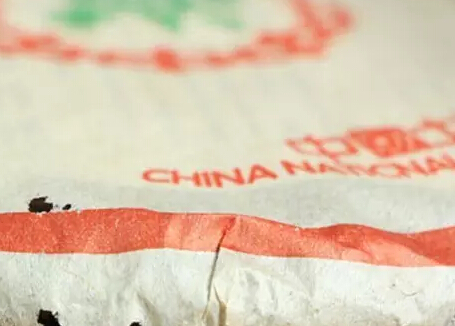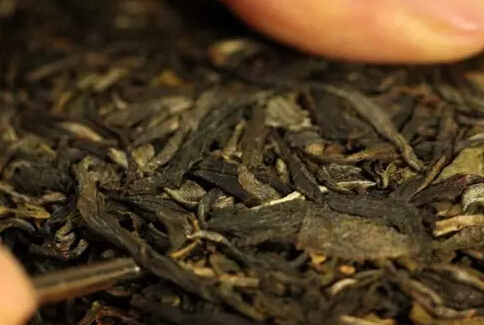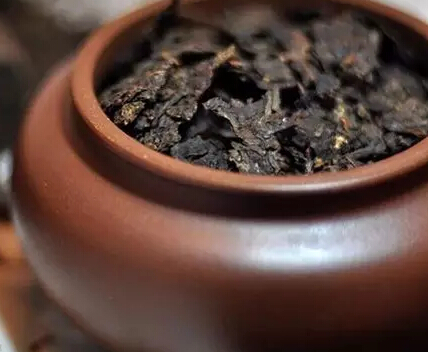To enjoy a cup of well-brewed Pu-erh tea, the 'awakening tea' process before brewing is a crucial step.
Awakening tea refers to reviving the tea's quality and concentrating its aroma by altering its storage method.
Often, old tea freshly unpacked from bamboo baskets or shells may taste dull and have a scattered aroma, making it difficult to showcase the deep and rich flavor of aged tea. To enjoy a well-brewed cup of aged tea, the 'awakening tea' process before brewing is essential. Even tea aged for just seven or eight years can be significantly improved in quality through the following awakening steps.

There are two methods of awakening tea: 'dry awakening,' which refers to awakening before brewing, and 'wet awakening,' which occurs during brewing. Aged Pu-erh tea generally requires dry awakening after being removed from storage, with the primary goal being to eliminate storage odors.
The first step is to break the tea into small pieces weighing a few grams each, using either hands or a tea knife. The term 'break' is used instead of 'split,' 'disassemble,' or 'unpack' because very old tea cakes are often already loose, and a gentle shake or nudge will cause the leaves to fall apart. For tea that is only one or two decades old and still tightly compressed, a tea knife is usually needed. For tea cakes or bricks, inserting the knife from the side can easily split the tea into two pieces, which can then be broken into smaller portions by hand. Tuo tea, which is usually more tightly compressed, can be cut from the edge or side. Be careful not to break the tea into too fine pieces, as overly fragmented tea can clog the teapot spout and cause the tea to release its flavor too quickly, affecting the stability of the tea's taste and concentration during brewing.

The next step is to air the tea to disperse any stale or musty odors. Spread the broken tea leaves in a clean, shaded area and let them air for several days. This is the stage when the tea is most susceptible to absorbing foreign odors, so ensure the environment is free of strong smells and avoid direct sunlight or prolonged exposure to artificial light. Covering the tea with a sheet of white paper can help prevent these issues. The duration of airing depends on the condition of the tea. For clean tea, two or three days may suffice, while tea stored in humid conditions may require up to one or two weeks to fully dissipate storage odors.
Finally, store the aired tea in a purple clay pot (or ceramic jar). Purple clay offers excellent insulation, light-blocking properties, and some breathability, helping to maintain stable temperature and humidity inside the container. Storing tea in such an environment allows its quality and aroma to consolidate quickly. When selecting a purple clay pot, it is best to use an older pot with high sintering and no odors.

New purple clay pots often carry earthy or kiln odors, which can impart unwanted flavors to the tea. A simple way to treat a new pot is to rinse it with boiling water and soak it, changing the water once or twice daily for several days before drying it thoroughly. Ensure the pot is completely dry before storing tea, as any residual moisture can cause the tea to mold. To confirm the pot is dry, place a handful of raw tea leaves inside, seal it for a day, and check that the leaves do not absorb moisture or soften. Adding some clean bamboo charcoal to the pot can further help absorb odors and enhance the tea's quality.